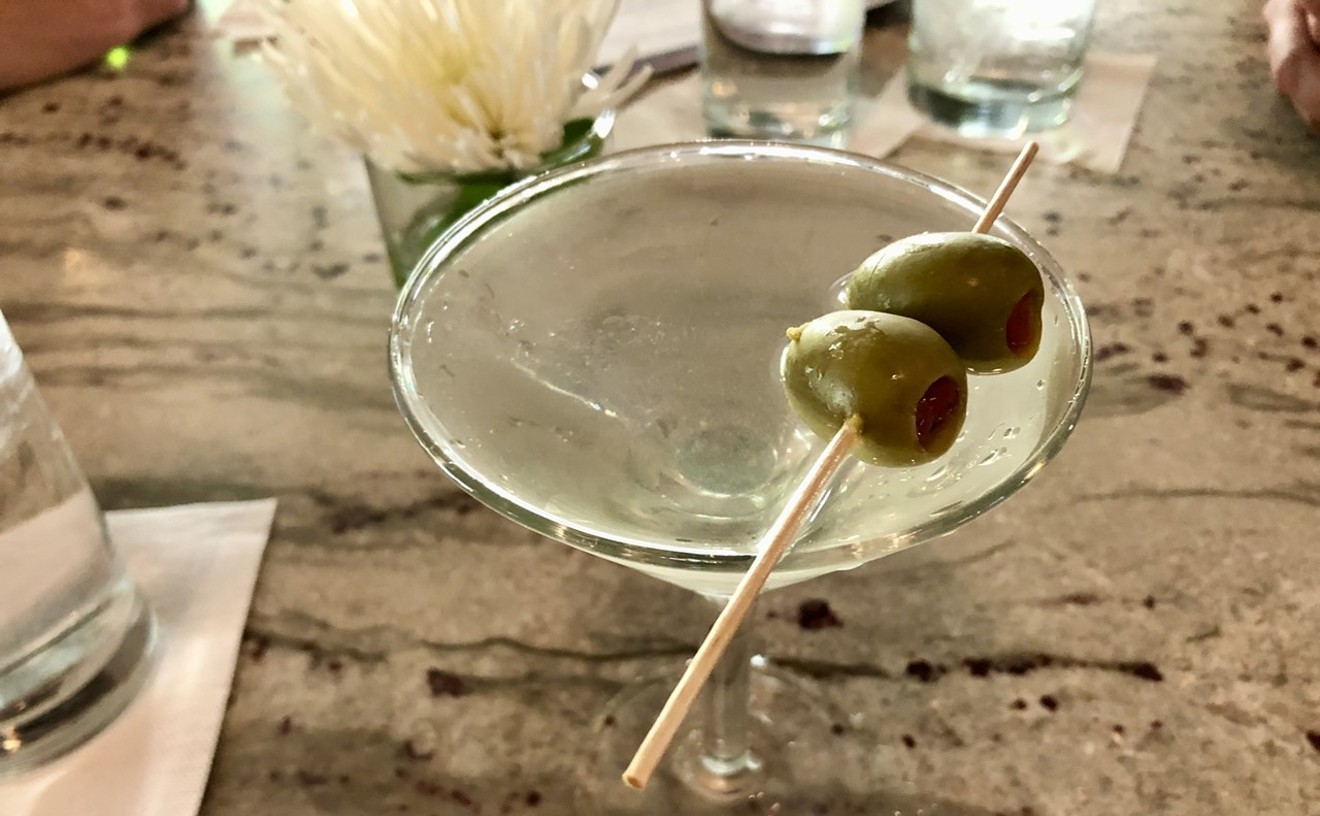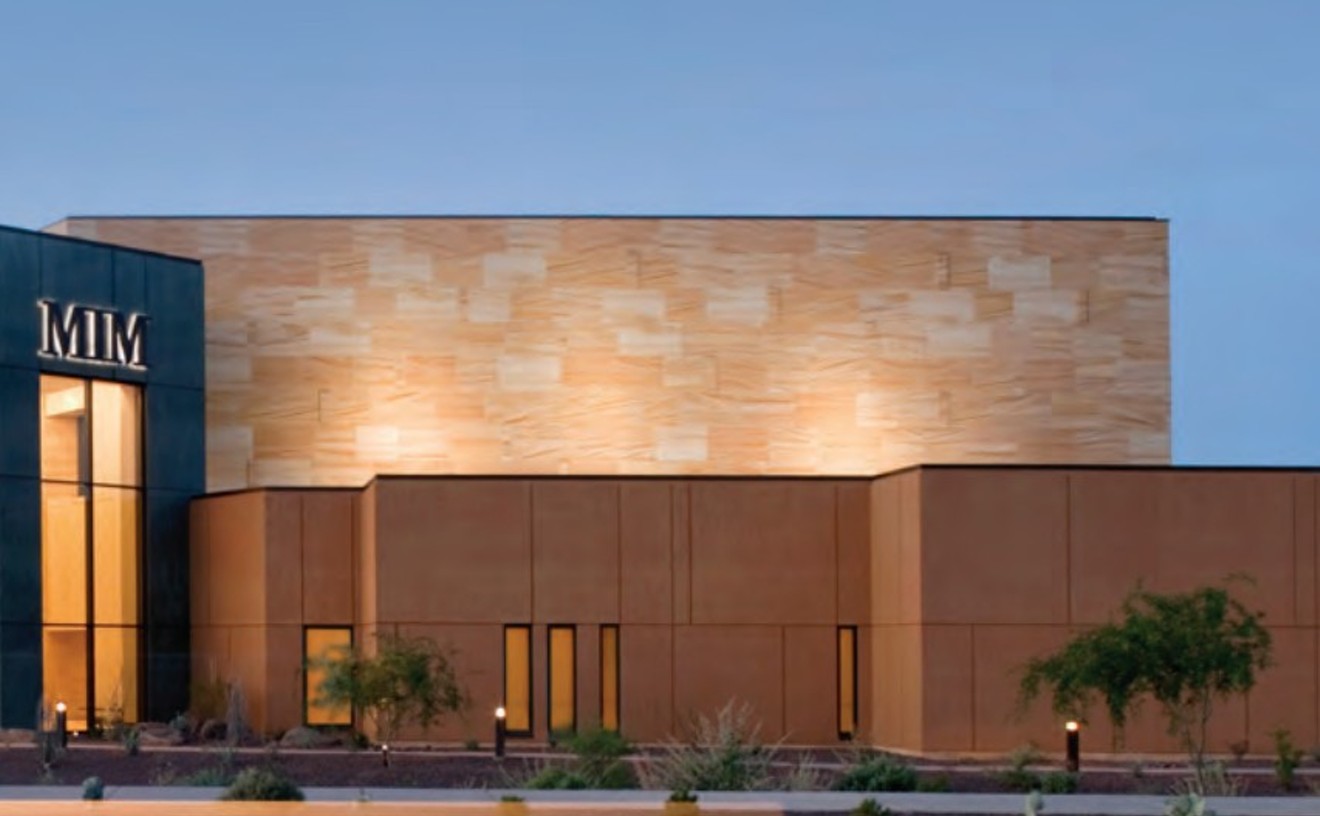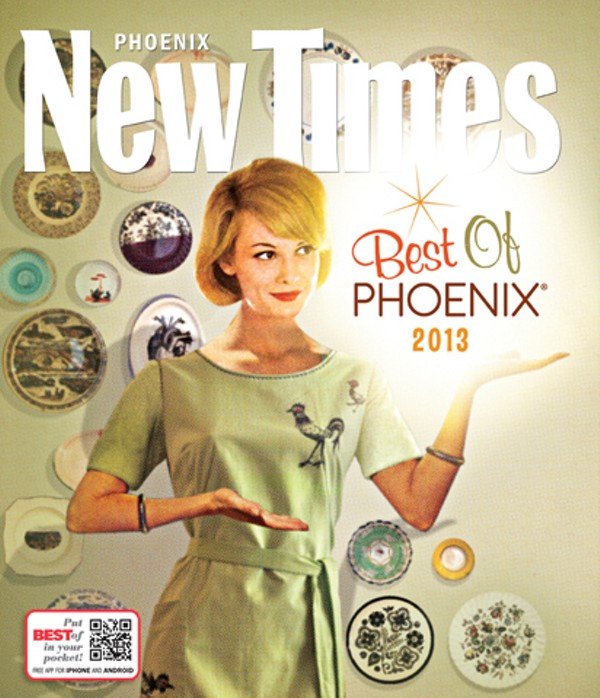Marshall Shore is Arizona's self-proclaimed hip historian, and we wholeheartedly agree, as this smart, stylish guy more than lives up to the title. With informative tours — like his ghostly trips, Winnie Ruth Judd excursions that lead attendees through the story of her infamous trunk murders, and Retro Spectacular presentations on such aspects of Phoenix history as the Valley's notable neon signage and Midcentury Modern architecture — he's a bubbly wealth of information. When Shore isn't guiding newbs through the annals of Copper State trivia, you can find him behind the counter at The Clarendon Hotel serving as a liaison to the city's must-see destinations. Swing by the front desk for his recommendations; he'll be the hip one in teal glasses and colorful vintage duds.
Best Classic Rock Station
KSLX 100.7 FM
You gotta give this station credit for being the single most solid monument to the greatest American invention since the airplane or peanut butter: rock 'n' fucking roll. But, yeah, yeah, you've heard those same old Aerosmith hits a hundred times on other stations. On KSLX, not only do they do some serious crate-digging, but they'll shoot you little factoids that educate and remind you why you love the Rolling Stones the way you do. And if the Lunchtime Theme Park and Sunday night's The Deep End shows weren't enough, there's always Six O'Clock Stoner and Gettin' the Led Out.
Thankfully, KSLX also tends to censor out the older stuff that was popular way back when but never was actually good (sorry, Mötley Crüe). So screw anyone who says this rock is just for dads. Without the jams that KSLX pays tribute to, your pops wouldn't have been able to seduce your mom and you never would've been born.
Best Modern Phoenix Tour Stop
The Adkins House
Jim and Amy Adkins are no strangers to the spotlight. Jim has fronted the emo rock outfit Jimmy Eat World since 1993. But when the married couple opened up their 1956 ranch house for show on the "Left of Central" Modern Phoenix Tour, folks got an inside look at the couple's Midcentury Modern lifestyle in a well-preserved gem. The Adkins' home is a sprawling beauty and especially gorgeous compared to some of the remodeled homes featured on the tour. With 1950s tile in its bathrooms (including some sporting the oh-so-covetable Franciscan Starburst pattern), one of which boasts an original tub, sinks, and toilet all in pink, a stone fireplace, and lovely built-in cabinetry, it was one stop on the tour where we wanted to linger as long as possible.
Best Vintage Downtown Building to Poke Your Head Into
Hanny's

When downtown Phoenix dwellers want a $5 martini and a good dose of history, the answer is simple — go to Hanny's. The former department store turned fire-testing facility turned Mad Men-style restaurant and cocktail lounge is the perfect example of developers' attempts to repurpose and resurface Phoenix's endangered historic buildings. Originally built and designed by architects Ryal Lescher and Leslie Mahoney in 1947, then later renovated by owner/developer Karl Kopp and commissioned by Janice Leonard, Hanny's holds a curious assortment of historic throwbacks and modern twists. There's the mezzanine floor, showcasing original signage from Hanny's dearly departed department store days, the upstairs level, which houses a cluster of former dressing rooms transformed into minimalist bathrooms, and, of course, there's the basement. Though the underground space is almost entirely gated off, unsuspecting visitors will be surprised to find a dimly lit table of baby dolls waiting for them just beyond the fence. Creepy? Maybe. Unexpected? You bet. But it's peculiar details like this that keep us coming back to Hanny's — well, that and the cocktails.
- 40 N. 1st St., Phoenix, 85004 Map
- 602-252-2285
- www.hannys.net
Best Place to Find a Vintage Treasure
Arizona Room at Burton Barr Central Library

If you're headed to explore the Arizona Room at Burton Barr Library, we recommend you block out an afternoon (or two). The small cove inside the massive library in downtown Phoenix serves as a bank of local knowledge and history. The collection features maps, books, magazines, and newspaper clippings that explain Southwest culture — past and present. Be prepared to brush up on your local trivia, including facts and figures in art, the military, archaeology, transportation, environment, tourism, culture, and resources.
Among the Arizona Room collection's highlights: Phoenix aerial surveys taken as early as 1968, more than 1,200 biographies, correspondence from newspapermen and Rough Rider James H. McClintock, telephone directories, high school yearbooks, census data, Fort Verde records, Arizona Territory Interior Department appointment papers, Sanborn maps, and a vertical file of endless information stored in the back by subject and name. Told you you're going to need some time.
- 1221 N. Central Ave., Phoenix, 85004 Map
- 602-262-4636
- www.phoenixpubliclibrary.org
Best Place to See Vintage Music Memorabilia
Musical Instrument Museum

Phoenix is home to an innovative museum that has no comparison. Not only is there nothing like it in the United States, but the Musical Instrument Museum here even surpasses the one in Brussels that inspired it. The MIM has hundreds of instruments from every corner of the Earth, of course, with displays for more than 200 countries and territories, complete with listening samples. It also has a music theater and interactive room, where playing with the exhibits is encouraged, as well as music memorabilia from rock stars and other celebrity musicians from the past century or so. They have guitars played by Elvis Presley, an original theremin build by the inventor himself, and the piano played by John Lennon when he composed "Imagine." The Artist Gallery features a collection of customized microphones used onstage by singers like Rihanna, and there's even a marijuana-leaf-decorated mic used by Snoop Dogg. There are also displays for Arizonan music, such as tributes to locals who hit the big time, including Linda Rondstadt, Waylon Jennings, and Russell "Big Chief" Moore, a Pima Indian who played with Louis Armstrong.
- 4725 E. Mayo Blvd., Phoenix, 85050 Map
- 480-478-6000
- www.themim.org
Best AM Oldies Station
KAZG 1440 AM
We're not quite sure when all the FM oldies stations in town started venturing into the 1970s and '80s during airtime, but when we want to shimmy and shake to the classics, we skip over the FM dial and go right to 1440 AM. "Arizona Gold" captured our hearts with a selection of everything from classic oldie favorites like "Twist and Shout" and "Leader of the Pack" to more unique cuts like Jorgen Ingmann's "Apache" and The Kinks' "A Well Respected Man." Unlike the frequency modulated corporate-controlled stations, the AM station has a light fuzziness in the background, adding the same nostalgic feeling that the cracks and pops of a vinyl record carry. It also means fewer commercials to sit through in between your favorite jukebox jams. Plus, in the late afternoons during rush hour they play an awesome all-Hindi music show called Radio Sri.
Best Vintage Film Series
Silent Sundays

Downtown's Orpheum originally served as a silent movie house. Before its 1990s restoration, the Valley of the Sun Chapter of the American Theatre Organ Society raised funds to sponsor the installation of a huge Wurlitzer assembled from vintage parts. Occasions to hear this gorgeous monster in action are rare. One of our favorites is Silent Sundays, when a virtuoso organist plays accompaniment to an actual pre-talkie film. The acoustics are stunning, and many of the selections are the very same ones used by theater organists back when the films were released. (They kept notes.)
The screenings are sporadic at best (and the films VOTS-ATOS can afford to rent are sometimes a little weird), but the chapter accepts donations to help support the next Silent Sunday and hosts regular meetings and events featuring the Orpheum instrument and other great local organs, each one an entertainment experience like no other. So it's worth stalking the website.
- 203 W. Adams St., Phoenix, 85003 Map
- 602-534-5600
- orpheum-theater.com/orpheum_theater_phoenix.php
Best Vintage Dorm
Manzanita Hall
Sometimes, we drive by Gammage Auditorium, beautifully perched on the southwestern tip of ASU's Tempe campus, and wonder how long it will be till someone notices that the iconic theater has fallen into pale pink disrepair and tries to tear it down.
That won't be easy, given that Gammage was designed by Frank Lloyd Wright, but you know Phoenix — someday someone will try. That's why we were pleasantly surprised a couple of years back to learn that Manzanita Hall was being spared the wrecking ball.
Considering none of the reports on the hall's recent remodel list an architect — let alone a super-famous one — it's amazing the 1967 structure made it. But it did, and we're pleased, because after Gammage, it's ASU Tempe's most notable structure. It looks like it was built of Tinker Toys by a triangle-happy toddler, and by the time the remodel took place, residents were complaining that the place was stinky and rundown. No more. Late this summer, hundreds of lucky students moved into new swanky, LEED-certified digs. A good lesson in preservation.
- 100 E. University Dr., Tempe, 85281 Map
Best Vintage Arms
Arizona Military Museum

Don't know your M1895 "potato digger" from a Howitzer? Get the Bushmasters mixed up with the Rough Riders? Think the Buffalo Soldiers hunted buffalo? Then a trip to the Arizona Military History Museum may be in order. This award-winning museum, operated by the nonprofit Arizona National Guard Historical Society and run by the irascible and ever-knowledgeable retired U.S. Army Colonel Joe Abodeely, is located in Papago Park, in an adobe structure once used during WWII as a maintenance shop where German prisoners of war worked while being housed nearby. The museum follows Arizona's military history from the conquistadors and the Spanish Colonial Period to the U.S. Mexican War and on through to the Vietnam War and Operation Iraqi Freedom. And the many displays feature every sort of firearm, flag, and uniform imaginable, including a 19th-century belt-fed machine gun and a genuine "Huey" UH-1M Army combat helicopter flown in Vietnam. Entrance fee? Nada. Making the museum a helluva lot cheaper than a degree in military history from ASU.
- 5636 E. McDowell Rd., Phoenix, 85008 Map
- 602-267-2676
- www.azdema.gov/museum/index.html





